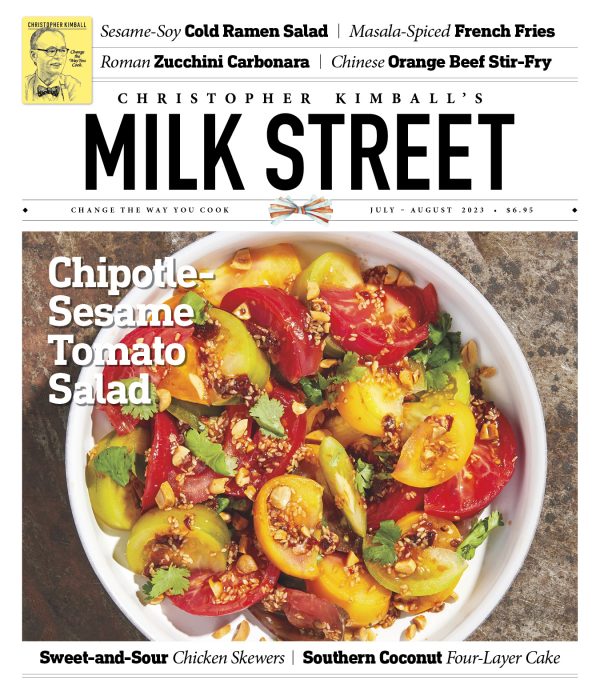Your email address is required to begin the subscription process. We will use it for customer service and other communications from Milk Street. You can unsubscribe from receiving our emails at any time.
Mexican Sweet Corn Cake
Christopher Kimball
July-August 2020
We visited Adriana Luna at her Coyoacán Market restaurant for fajitas Veracruz style, but also discovered a local specialty, panqué de elote.
Photos: Christopher Kimball; Connie Miller of CB Creatives; Styling: Christine Tobin
Pardon the interruption
You need to be a Milk Street Digital Member to see the full article
JOIN MILK STREET DIGITAL & PRINT
12 WEEKS FOR JUST $1
and get access to all of our recipes and articles online, as well as in print.
GET DIGITAL & PRINT
Simple, Bold Recipes
Log In
Or subscribe

Sign up to receive texts
Successfully signed up to receive texts!
We'll only send our very best offers - Like a $15 store credit to start.
By entering your phone number and submitting this form, you consent to receive marketing text messages (such as promotion codes and cart reminders) from Christopher Kimball's Milk Street at the number provided, including messages sent by autodialer. Consent is not a condition of any purchase. Message and data rates may apply. Message frequency varies. You can unsubscribe at any time by replying STOP or clicking the unsubscribe link (where available) in one of our messages. View our Privacy Policy and Terms of Service.





